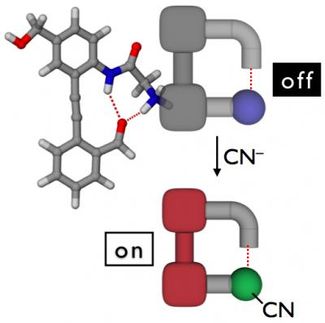Airborne Mites
Aerosol particles influence atmospheric chemistry, climate, and humanhealth
Advertisement
They are tiny and very finely dispersed and play important roles for our climate and health. We are talking about aerosol particles, airborne droplets and solid particles on the micro- or nanometer scale. These stem from a variety of natural and anthropogenic sources: the incomplete combustion of fossil fuels, forest fires, volcanic eruptions, dispersion of dust and sea salt, in addition to biological materials such as pieces of plants, microorganisms, or pollen. The most noticeable examples of aerosols are clouds, which consist of water droplets or ice crystals with diameters on the order of 10 µm and are formed by condensation of water vapor onto smaller particles.
"Concentration, composition, and size distribution of atmospheric aerosol particles are highly variable at different locations and times," explains Ulrich Pöschl of the Max Planck Institute of Chemistry in Mainz in a review article in Angewandte Chemie. "The precise determination of their chemical composition is a demanding analytical challenge. Aside from several main components, there are hundreds of trace constituents and numerous chemical reactions to take into account."
It is undisputed that aerosols have a strong influence on climate and health. The interactions and relationships are so complex, however, that it is unclear to which extent different effects and feedback loops have a strengthening or calming influence. For example, an intensification of photosynthesis and biomass production caused by the increase in atmospheric CO2 content and global warming can lead to an increase in biogenic aerosol particles. These act as nuclei for the condensation of clouds, and an increase in clouds has a cooling effect (negative feedback). On the other hand, higher temperatures can be stressful for plants, causing photosynthesis and aerosol formation to decrease. This may lead to a reduction of cloud cover and increase global warming (positive feedback).
"Very little is known about the relations between air quality and allergies," says Pöschl. The most prominent group of airborne allergens are proteins, which constitute up to about 5% of urban air particulate matter. In air polluted by nitrogen oxides and ozone (summer smog), proteins such as the birch pollen allergen are easily nitrated, and chemically modified proteins can strengthen physiological immune reactions. Thus the inhalation of nitrated protein aerosols appears likely to promote allergies. "If such relations are not sufficiently explored," says Pöschl, "there is a danger that new environmental protection laws and technologies have undesirable side effects and cause more harm than good. For example, some exhaust systems for diesel vehicles remove soot particles but release more nitrogen oxides."
Original publication: Ulrich Pöschl; "Atmospheric Aerosols: Composition, Transformation, Climate and Health Effects"; Angewandte Chemie International Edition 2005, 44, 7520.
Other news from the department science
Most read news
More news from our other portals
See the theme worlds for related content
Topic world Synthesis
Chemical synthesis is at the heart of modern chemistry and enables the targeted production of molecules with specific properties. By combining starting materials in defined reaction conditions, chemists can create a wide range of compounds, from simple molecules to complex active ingredients.

Topic world Synthesis
Chemical synthesis is at the heart of modern chemistry and enables the targeted production of molecules with specific properties. By combining starting materials in defined reaction conditions, chemists can create a wide range of compounds, from simple molecules to complex active ingredients.



























































